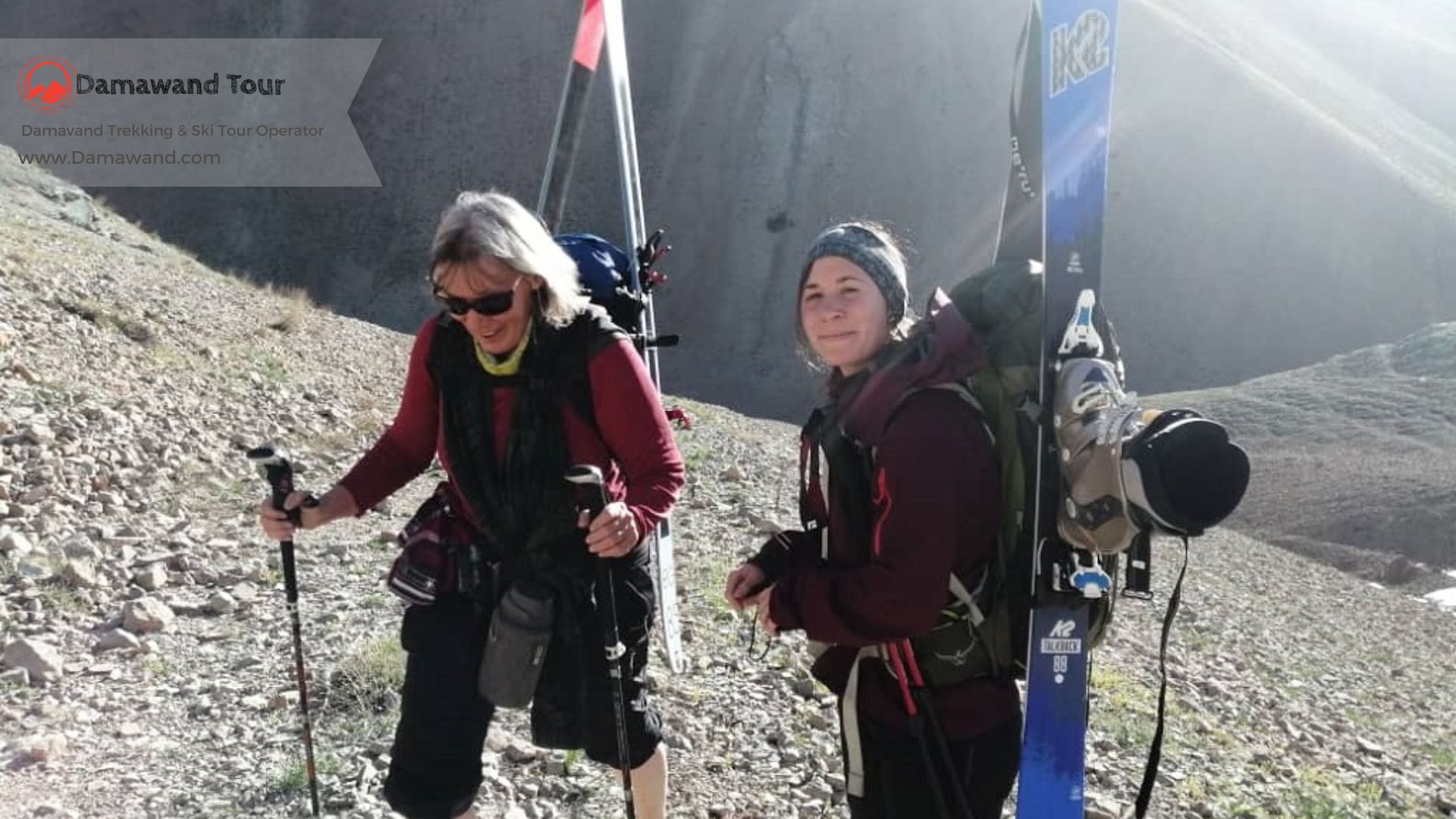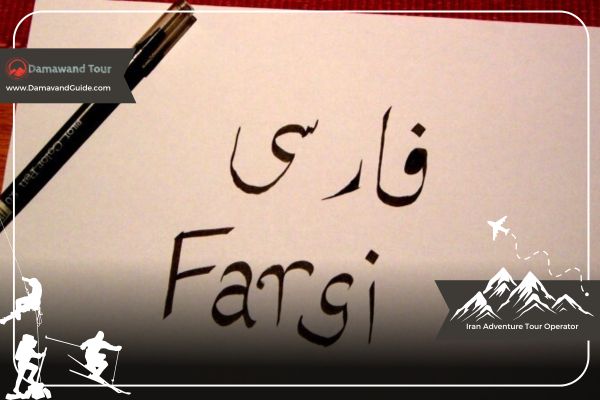
Best Mount Damavand Ski Tours in Iran
April 14, 2023
6 Popular Iran Trekking Routes Guide
April 27, 2023Learning Farsi (Persian) for travel to Iran
Discover the rich cultural heritage of Iran and enhance your travel experience by learning Farsi (Persian). Whether you’re planning a short visit or an extended stay, learning Farsi can help you communicate with locals, read signs and menus, and gain a deeper understanding of the country’s culture and history. Start your journey today with our comprehensive guide to learning Farsi for travel to Iran.
Farsi Language
Farsi, also known as Persian, is a beautiful and ancient language spoken by millions of people around the world. It is an Indo-European language that is the official language of Iran and Tajikistan, and it is also spoken in Afghanistan, Uzbekistan, Iraq, and other countries in the region.
Farsi is a rich and complex language with a long history, and it has influenced many other languages over the centuries. It is known for its poetic beauty and rich literary tradition and has been the language of many great poets, philosophers, and scientists throughout history. Whether you are interested in learning Farsi for travel, business, or personal enrichment, you will find that it is a fascinating and rewarding language to study.

In addition to being the official language of Iran, Farsi is also an important language for travel and cultural exploration in the region. Iran, in particular, is a popular destination for travelers seeking to immerse themselves in the rich history, culture, and natural beauty of the country.
Learning Farsi can greatly enhance your travel experience in Iran, allowing you to communicate with locals, read signs and menus, and gain a deeper understanding and appreciation of the country’s culture and heritage. Whether you are planning a short visit or an extended stay in Iran, learning Farsi can open up new opportunities for exploration and discovery, and help you make the most of your travel experience.
Learn the Farsi alphabet for your travel to Iran
Are you planning to travel to Iran or any other Persian-speaking country? Learning Persian (Farsi) can greatly enhance your travel experience, as it allows you to communicate with locals, navigate the city, and understand the culture on a deeper level. One of the first things you’ll need to learn when studying Persian is the Farsi alphabet.
The Farsi alphabet consists of 32 letters and is written from right to left. The letters are categorized into three groups: consonants, vowels, and diacritical marks. While the alphabet may seem intimidating at first, with some practice and patience, you’ll soon be able to read and write in Farsi with ease.
Consonants
The Farsi alphabet has 22 consonants, which are represented by the following letters. Here is a list of Farsi alphabet to English:
| ب (b) | پ (p) | ت (t) | ث (s) |
| ج (j) | چ (ch) | ح (h) | خ (kh) |
| د (d) | ذ (z) | ر (r) | ز (z) |
| ژ (zh) | س (s) | ش (sh) | ص (s) |
| ض (z) | ط (t) | ع (a) | غ (gh) |
| ف (f) | ق (q) | ک (k) | گ (g) |
| ل (l) | م (m) | ن (n) | و (v) |
| ه (h) | ی (y) |
Note that some of these letters have similar sounds to those in the English alphabet, while others may take some getting used to. For example, the letter “ث” represents the “s” sound, but is pronounced by putting your tongue between your teeth instead of behind them like in English.
Vowels
The Farsi alphabet has six vowels, which are represented by the following letters:
| ا (a) | ی (i) | و (u) |
| ه (e) | ئ (e) | ی (ee) |
Diacritical Marks
In addition to the 32 letters, the Farsi alphabet also includes three diacritical marks:
ً (short vowel “a”)
ٌ (short vowel “u”)
ٍ (short vowel “i”)
These marks are placed above or below the letters to indicate the short vowel sounds. They are often omitted in written Farsi, but are important to know when learning to read and write in the language.

Learn Farsi for Travel to Iran
Tips for Learning the Farsi Alphabet
Learning a new alphabet can be a daunting task, but with these tips, you’ll be on your way to mastering the Farsi alphabet in no time:
Practice regularly: Consistent practice is key when learning any new language. Set aside some time each day to practice writing and reading in Farsi.
Use mnemonic devices: Mnemonic devices are memory aids that help you remember information. Create your own mnemonic devices for each letter of the Farsi alphabet to help you remember them more easily.
Listen to native speakers: Listening to native speakers can help you better understand the sounds and pronunciation of the letters. Try listening to Persian music or watching Iranian movies with subtitles.
Take a course: Enrolling in a Farsi language course can provide you with structured learning and the guidance of a teacher. Many language schools and online courses offer Farsi classes for beginners.
In conclusion, learning the Farsi alphabet is an essential step in mastering the Persian language. With practice and patience, you’ll soon be able to read and write in Farsi with ease, opening up a whole new world of travel experiences and cultural understanding.
Learn Farsi for Travel to Iran
here are some useful phrases in Farsi that can help you practice the Farsi alphabet:
سلام (salam) – Hello
خداحافظ (khodaa haafez) – Goodbye
خوبی؟ (khobi?) – How are you?
من خوبم، مرسی (man khubam, mersi) – I’m good, thank you
بله (bale) – Yes
نه (na) – No
ممنون (mamnoon) – Thank you
لطفاً (lotfan) – Please
ببخشید (bebakhshid) – Excuse me
معذرت میخواهم (ma’zerat mikhaaham) – I’m sorry
میتوانید به انگلیسی صحبت کنید؟ (Mitavanid be Engilisi sohbat konid?) – Can you speak English?
لطفاً، یک نقشه برای من داشته باشید (Lotfan, yek naqshah baray-e man daashteh baashid) – Please, have a map for me
ممکن است یک تاکسی برای من صدا کنید؟ (Mumkun ast yek taksi baray-e man seda konid?) – Can you call a taxi for me, please?
چقدر هزینه میکند؟ (Cheghadr hazineh mikonad?) – How much does it cost?
کجاست دستشویی؟ (Kojast dastshui?) – Where is the bathroom?
ممکن است منو عکس بگیرید؟ (Mumkun ast mano aks begirid?) – Can you take a picture of me?
میتوانید یک رستوران خوب به من پیشنهاد کنید؟ (Mitavanid yek restoran-e khoob be man pishnehad konid?) – Can you recommend a good restaurant to me?
میخواهم به اینجا بروم (Mikhaaham be injaa beravam) – I want to go here
کجاست ایستگاه قطار/اتوبوس؟ (Kojast istgaah-e qetaar/otobus?) – Where is the train/bus station?
ممنون بابت کمک شما (Mamnoon baabat-e komak-e shoma) – Thank you for your help.
By practising these basic phrases, you can not only improve your Farsi language skills but also have a more enjoyable and meaningful travel experience in a Persian-speaking country.




